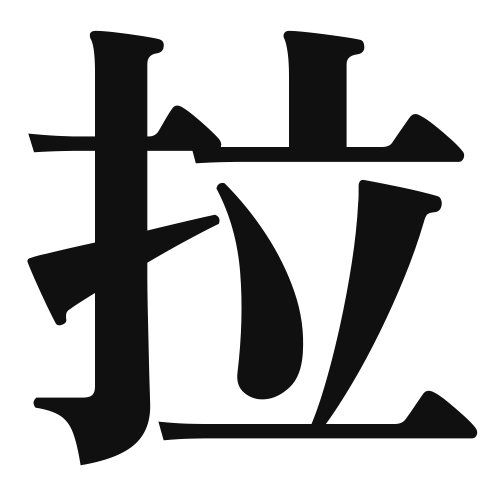1. Overview of Meaning
The kanji “拉” (ra) generally means “to pull” or “to draw.” It conveys the action of pulling something towards oneself or exerting force to move an object closer.
2. Formation and Radical
Formation of the Kanji: The kanji “拉” is a phonetic compound (形声文字), which combines a semantic component and a phonetic component. The left part, “扌” (the hand radical), indicates an action related to the hand, while the right part “拉” suggests the sound and meaning associated with pulling.
Radical: The radical of “拉” is “扌,” which is related to hand actions.
3. Examples of Usage
Common Words and Phrases: Some frequently used words that include “拉” are:
- 拉致 (らち, rachi) – abduction
- 拉麺 (らーめん, rāmen) – ramen (noodles)
Example Sentences in Daily Conversation:
- 彼はロープを拉いて、物を引き寄せた。
- (He pulled the rope to draw the object closer.)
4. Synonyms and Antonyms
Similar Kanji: A similar kanji is “引” (in), which also means “to pull” but can imply a more gentle or less forceful action compared to “拉.”
Antonyms: An antonym of “拉” is “押” (oshi), which means “to push.” This represents the opposite action of moving something away from oneself.
5. Cultural and Historical Background
Relation to Japanese Culture: The kanji “拉” is often used in contexts related to traditional Japanese practices, such as martial arts, where pulling techniques are essential.
Proverbs and Idioms: While there may not be specific proverbs that use “拉,” it is often found in expressions related to effort and action, emphasizing the importance of taking initiative.
